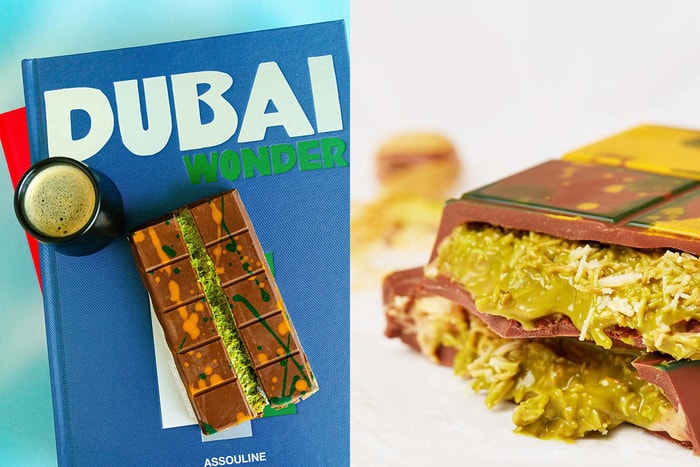The Top Reasons Fix Dessert Chocolatier is So Popular Right Now
Wiki Article
Relish the One-of-a-kind High Quality of Handmade Delicious Chocolate Creations
The globe of handmade chocolate productions uses an engaging junction of creativity and science, where each confection is a testament to the skill of the chocolatier. These unique chocolates, crafted from very carefully sourced cacao beans, expose a selection of taste accounts formed by their geographic origins and the meticulous processes utilized in their creation.The Art of Chocolate Making
 The procedure of chocolate making is a delicate art that integrates both science and imagination. It starts with the mindful selection of high-grade cacao beans, which are sourced from numerous regions known for their distinct features. The beans undergo fermentation, an important step that creates their flavor profile and scent. After fermentation, the beans are dried out, roasted, and cracked open to extract the nibs, which are the heart of the delicious chocolate.
The procedure of chocolate making is a delicate art that integrates both science and imagination. It starts with the mindful selection of high-grade cacao beans, which are sourced from numerous regions known for their distinct features. The beans undergo fermentation, an important step that creates their flavor profile and scent. After fermentation, the beans are dried out, roasted, and cracked open to extract the nibs, which are the heart of the delicious chocolate. When the nibs are refined right into chocolate liquor, the artisan chocolatier masterfully stabilizes the percentages of cocoa solids, cocoa butter, and sugar. This procedure needs a deep understanding of temperature control and timing to attain the desired appearance and taste. Conching, a technique that refines the delicious chocolate's texture, is commonly used to eliminate any type of grittiness and boost smoothness.
Temperatures are diligently kept an eye on during the tempering process, guaranteeing the chocolate gets a rewarding snap and a glossy surface when broken. The final stage entails molding and cooling down the chocolate, where creativity radiates via as craftsmens explore different shapes and layouts. Eventually, handcrafted chocolate developments reflect both the meticulous craftsmanship of the chocolatier and the abundant heritage of delicious chocolate making itself.
Taste Accounts of Handmade Delicious Chocolate
Hand-crafted chocolate's flavor profiles are an unified blend of the cacao's origin, processing techniques, and the chocolatier's artistry. Each area where cacao is expanded imparts distinct flavors; for example, beans from Madagascar commonly exhibit brilliant citrus notes, while those from Venezuela may provide earthy undertones and subtle spice. The terroir-- comprising soil elevation, high quality, and environment-- plays an important function fit these unique attributes.Handling techniques further impact flavor. Techniques such as fermentation and roasting can enhance or diminish particular taste attributes. A mindful selection of toasting temperature and duration enables chocolatiers to unlock the complete potential of the cacao, advancing intricate flavors ranging from fruity to nutty, and also floral.
The chocolatier's experience in mixing different cacao varieties and incorporating corresponding components, such as herbs or seasonings, includes an additional layer of depth to the taste account. fix dessert chocolatier. This virtuosity changes simple components right into a sensory experience, raising handcrafted chocolate beyond simple confectionery. The outcome is an abundant tapestry of flavors that invites expedition and gratitude, allowing consumers to savor the precise workmanship behind each unique production
The Relevance of Quality Ingredients
 The structure of remarkable handmade chocolate lies in the choice of the finest components. Costs cacao beans, sourced from lasting ranches, have distinctive taste profiles that substantially improve the chocolate's complexity.
The structure of remarkable handmade chocolate lies in the choice of the finest components. Costs cacao beans, sourced from lasting ranches, have distinctive taste profiles that substantially improve the chocolate's complexity.Additionally, natural flavors and high-quality sugars add to the overall sensory experience. Craftsmens frequently choose natural or minimally processed sugars to keep the integrity of the chocolate's flavor. The addition of fresh and genuine components, such as vanilla or seasonings, can transform a straightforward confection right into a premium delight.
The dedication to making use of top quality active ingredients not just elevates the taste but likewise shows the chocolatier's dedication to their craft. This thorough focus to information promotes a much deeper link in between the consumer and the maker, as each bite tells a story of passion and proficiency. Inevitably, the prevalence of handmade delicious chocolate is a direct outcome of the ingredients picked, highlighting the importance of high quality in achieving an absolutely impressive product. this post When indulging in delicious chocolate, critical consumers can value the distinction that remarkable components make.

Craftsmanship and Layout Strategies
Creativity in chocolate-making goes beyond plain confectionery; it personifies a precise procedure where craftsmanship and design methods play an essential role (fix dessert chocolatier). Each hand-crafted chocolate creation begins with the careful choice of top quality components, however it is the skillful application of various methods that changes these active ingredients right into beautiful confectionsCraftsmanship entails a deep understanding of tempering chocolate to achieve the perfect sheen and snap. This process requires precise temperature level control and timing, requiring both expertise and experience. Furthermore, craftsmens commonly utilize strategies such as hand-piping, molding, and enrobing, permitting distinct shapes and textures that boost the aesthetic allure of each item.
Style methods are similarly important, as they encompass flavor layering and innovative mixes that push the boundaries of typical delicious chocolate. Craftsmens may incorporate components such as edible gold leaf, intricate layouts, and seasonal styles to enhance the sensory and aesthetic experience. Each development becomes a testimony to the chocolatier's commitment, embodying a mix of art and scientific research that astounds the senses. In the world of handmade delicious chocolates, the combination of workmanship and Get the facts style techniques not only provides indulgent deals with but additionally narrates via each thoroughly crafted piece.
The Experience of Tasting Chocolate
As one savors an item of chocolate, the experience goes beyond basic consumption; it ends up being a multi-sensory trip that engages the taste buds, aroma, and also the mind. The first encounter begins with the delicious chocolate's aesthetic attraction-- its shiny surface area, intricate layout, and rich color instantly astound interest.Upon damaging the delicious chocolate, one is welcomed by an enjoyable breeze, a testament to its quality and tempering process. The flavor account unravels progressively, commonly exposing layers of complexity.
Scents play a pivotal function in this sampling experience. The scent wafting from the delicious chocolate improves expectancy, as the olfactory detects prepare the taste buds for what is ahead. Ultimately, sampling handmade chocolate is not merely concerning flavor; it is an exploration of artistry, workmanship, and the careful read review care that goes into each development, culminating in a memorable experience that sticks around long after the last item is taken pleasure in.
Final Thought
Finally, the one-of-a-kind quality of handmade chocolate developments depends on the elaborate procedures of crafting, including the mindful option of costs components and the proficiency of style strategies. Each confection shows the virtuosity and devotion of knowledgeable chocolatiers, leading to unique taste profiles that welcome expedition. The sensory experience of tasting these delicious chocolates not only highlights their complexity yet also promotes a much deeper recognition for the workmanship intrinsic in every diligently crafted piece.These special chocolates, crafted from thoroughly sourced cacao beans, expose a variety of taste profiles formed by their geographic origins and the meticulous procedures employed in their creation. Inevitably, hand-crafted delicious chocolate productions reflect both the meticulous workmanship of the chocolatier and the rich heritage of delicious chocolate making itself.
Hand-crafted chocolate's taste profiles are an unified blend of the cacao's beginning, processing approaches, and the chocolatier's creativity. Artisans frequently like organic or minimally processed sugars to preserve the honesty of the chocolate's taste. Inevitably, tasting handmade chocolate is not simply concerning taste; it is an expedition of virtuosity, workmanship, and the meticulous treatment that goes right into each production, finishing in a memorable experience that sticks around long after the last item is enjoyed.
Report this wiki page